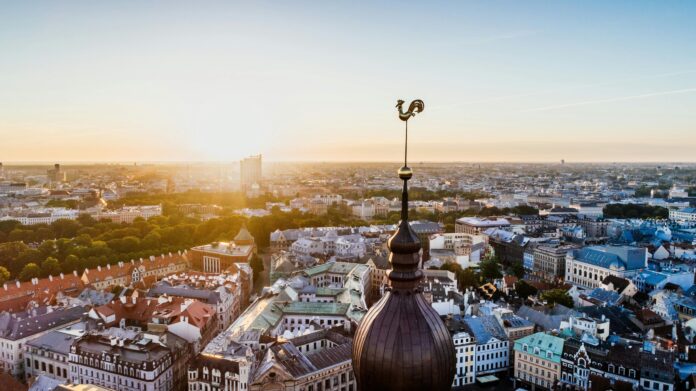At the beginning of this year, Latvia’s population was 1.872 million, down 0.6 percent or 11,100 people from the same period a year ago, according to the data released by the Central Statistical Bureau (CSB) on Monday.
A drop of 0.7 percent was due to a negative natural population change and growth of 0.1 percent due to migration.
The positive net migration (the difference between immigration and emigration) was caused by 8,200 remigrants and 4,400 refugees from Ukraine who are included in the population of the country providing asylum. At the beginning of 2024, there were 25,700 Ukrainian refugees living in Latvia.
However, the CSB noted that excluding the refugees from Ukraine, the number of people arriving in Latvia exceeded the number of those leaving the country for the first time since 1990.
The number of births in Latvia fell by 9.2 percent or 1,464 births from 2022 and by 16.8 percent or 2,930 from 2021 to 14,490 last year. The birth rate has been falling at an accelerating rate and is the lowest in a century, statistics show.
The number of deaths dropped 8.8 percent year-on-year to 28,031 deaths in 2023. Compared to 2021, the number of deaths fell 19 percent. The decreased mortality means that the negative natural population change has improved slightly in recent years (from 17,200 in 2021 to 13,500 in 2023).
Long-term international migration increased population of Latvia by 2,415 people (incl. 2,051 refugees from Ukraine). Compared to the peak number of immigrants (38,700) registered in 2022 when the positive net migration was mainly formed by 23,500 refugees from Ukraine, the number of immigrants halved to 18,700 in 2023 (incl. 4,353 refugees from Ukraine). The number of people leaving Latvia went down as well – 16,300 emigrants were registered in 2023 (incl. 2,302 refugees from Ukraine), which is 2.3 percent fewer than in 2022.
Out of all immigrants, 3,900 people or 21 percent came from the EU countries, 5,100 people or 27.4 percent (incl. 4,700 refugees from Ukraine) from the EU candidate countries (79.7 percent fewer than in 2022), 3,700 or 19.6 percent (incl. 1,700 or 9.1 percent from Russia) from the CIS countries (11.6 percent fewer than in 2022), 2,700 or 14.6 percent from the United Kingdom, and 3,300 or 17.4 percent from other countries.
Remigrants, i.e., citizens or non-citizens of Latvia as well as inhabitants having different citizenship but born in Latvia, totaled 8,200 people or made up 43.7 percent of all immigrants. Compared to the year before, the number of remigrants has reduced by 1,100 while their share in the total immigration grown by 19.7 percentage points.
Out of all 16,300 emigrants, 9,600 or 59 percent went to other EU countries (17 percent fewer than a year ago). Decline may be observed in the emigration to Germany (2,300 compared to 2,900 in 2022) and the United Kingdom (2,200 compared to 2.6 thousand in 2022). Emigration to CIS countries, in turn, went up slightly – by 34 people or 11.6 percent.
Along with the steady decline in the number of births, the number of children aged 14 and under fell by 7,661 over the year and their share in the total population made 15.6 percent. The number of inhabitants aged 15–63 also decreased – by 8,004 people – and the proportion thereof in the total population constituted 61.6 percent. The number of elderly people aged over 64 went up by 4,539 people and reached 22.8 percent of the total population. The mean age of inhabitants in Latvia is 43.1 years, varying between the regions from 42.3 years in Riga and 45.5 in Latgale.
Source: BNS
(Reproduction of BNS information in mass media and other websites without written consent of BNS is prohibited.)

